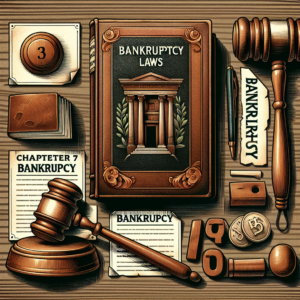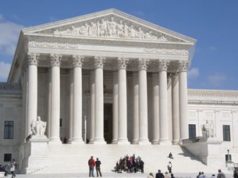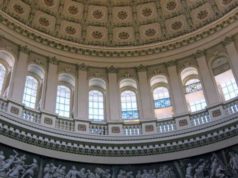
In a bold move that has sent shockwaves through the financial and legal communities, a new set of bankruptcy reform proposals has been unveiled, aiming to address the pressing issues faced by debtors and creditors in today’s volatile economic environment. As the nation grapples with rising inflation, increasing personal and corporate debt levels, and the lingering effects of the COVID-19 pandemic, these proposals seek to revolutionize the way bankruptcy is managed in the United States. This article delves into the necessity for reform, the key features of the proposals, their potential impact, expert opinions, and the challenges that lie ahead.
Understanding the Need for Bankruptcy Reform in Today’s Economic Landscape
The current economic landscape has highlighted significant shortcomings in the existing bankruptcy system, which many argue is outdated and ill-equipped to handle the complexities of modern financial distress. With millions of Americans facing mounting debt due to unforeseen circumstances, such as job losses and medical emergencies, the traditional bankruptcy framework often fails to provide adequate relief. Furthermore, the rise of gig economy workers and small businesses has introduced new challenges, as existing laws do not cater to their unique financial situations. As a result, there is a growing consensus among policymakers and advocates that comprehensive reform is essential to create a more equitable and efficient bankruptcy process that can adapt to the realities of contemporary economic life.
Key Features of the Proposed Bankruptcy Reform: A Comprehensive Overview
The proposed bankruptcy reform introduces several key features designed to streamline the process and enhance protections for both debtors and creditors. One of the most significant changes is the introduction of a simplified filing process, which aims to reduce the bureaucratic hurdles that often deter individuals from seeking relief. Additionally, the proposals include provisions for automatic stay extensions, allowing debtors more time to reorganize their finances without the immediate threat of creditor action. Another notable feature is the enhancement of financial education programs, which would be mandatory for individuals filing for bankruptcy, ensuring that they are better equipped to manage their finances post-bankruptcy. These reforms collectively aim to create a more user-friendly system that encourages responsible financial behavior while providing necessary protections for those in distress.
Analyzing the Impact of Reform on Debtors and Creditors Alike
The proposed reforms are poised to have a profound impact on both debtors and creditors. For debtors, the simplified process and extended protections could lead to a more favorable outcome, allowing them to retain essential assets while working towards financial recovery. This could ultimately reduce the stigma associated with bankruptcy, encouraging more individuals to seek help rather than suffer in silence. On the other hand, creditors may face challenges as the reforms could limit their ability to swiftly recover debts. However, proponents argue that a healthier debtor population can lead to increased long-term repayment rates, benefiting creditors in the long run. Striking a balance between the interests of both parties will be crucial to the success of these reforms.
Expert Opinions: What Economists and Legal Scholars Are Saying
Economists and legal scholars have expressed a range of opinions regarding the proposed bankruptcy reforms. Many experts laud the initiatives as a necessary evolution of bankruptcy law, emphasizing the importance of adapting to the changing economic landscape. They argue that the reforms could lead to a more sustainable financial ecosystem, where individuals and businesses are empowered to recover from financial setbacks without facing lifelong repercussions. However, some critics caution that the reforms may inadvertently encourage reckless borrowing behavior, as individuals might perceive bankruptcy as a more accessible option. As the debate continues, it is clear that the proposals have sparked a vital conversation about the future of bankruptcy law and its role in promoting economic stability.
Potential Challenges and Controversies Surrounding the Reform Proposals
Despite the potential benefits of the proposed bankruptcy reforms, several challenges and controversies are likely to arise during the implementation process. One significant concern is the potential for increased litigation as creditors may challenge the new provisions, particularly those that extend protections for debtors. Additionally, there is apprehension regarding the adequacy of funding for the proposed financial education programs, which are crucial for ensuring that debtors can make informed decisions post-bankruptcy. Moreover, the political landscape surrounding bankruptcy reform is fraught with division, as differing ideologies about personal responsibility and corporate accountability may hinder bipartisan support. Navigating these challenges will be essential for the successful enactment of the proposed reforms.
The Future of Bankruptcy Law: Predictions and Implications for Stakeholders
Looking ahead, the proposed bankruptcy reforms could signal a transformative shift in bankruptcy law, with far-reaching implications for all stakeholders involved. If enacted, these reforms may lead to a more compassionate and pragmatic approach to financial distress, prioritizing rehabilitation over punishment. This could foster a culture of financial literacy and responsibility, ultimately benefiting the economy as a whole. However, the success of these reforms will depend on careful implementation and ongoing evaluation to ensure that they achieve their intended goals without unintended consequences. As stakeholders—including policymakers, financial institutions, and consumer advocates—continue to engage in dialogue, the future of bankruptcy law remains a critical area of focus in the quest for economic stability and fairness.
In conclusion, the unveiling of these bankruptcy reform proposals marks a pivotal moment in the ongoing discourse surrounding financial distress and recovery in the United States. As the nation navigates the complexities of a rapidly changing economic landscape, the need for a more equitable and efficient bankruptcy system has never been more apparent. While challenges and controversies are likely to arise, the potential benefits of these reforms could pave the way for a more sustainable financial future for both debtors and creditors alike. As stakeholders continue to weigh in on the proposals, the outcome will undoubtedly shape the landscape of bankruptcy law for years to come.




















